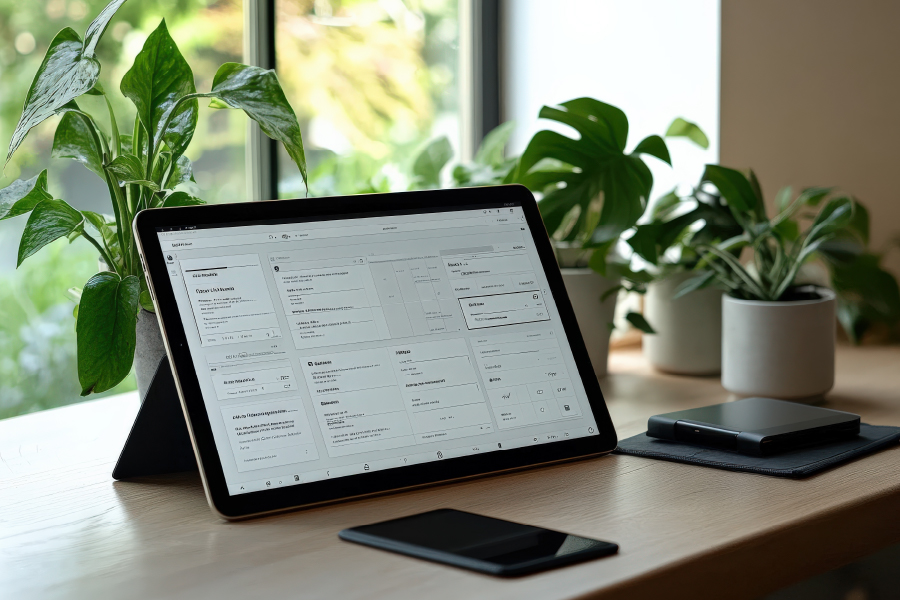Dear WuBookers, OTAs are an important-sometimes even indispensable-promotion and sales tool for those who run a hotel, B&B or vacation rental business. Each portal has its own specificities: there are agencies that specialize only in certain types of accommodations, others spread only in certain countries, and so on.
The requirements for hoteliers also change from platform to platform, and the same goes for the algorithms that govern the visibility of registered facilities. In this article we focus precisely on this last, fundamental aspect and summarize the most common ranking factors among the various OTAs.

What OTA algorithms are and how they work
Algorithms are computer systems that allow complex operations to be performed in an automated way from a set of information and instructions. Those of OTAs, for example, are programmed to analyze the entire database of facilities present and, based on certain parameters, determine which ones will be shown first and which, on the other hand, will remain at the bottom of the search results.
As anticipated, there is no one-size-fits-all rule, and often the formulas governing the algorithms of individual agencies are secret. However, a few official resources and a little practice make it possible to derive some general guidelines.
Accuracy is important
Detailed and accurate information, professional photos, useful and thorough descriptions: presenting yourself well can make a difference to the algorithm and to guests. What services are offered at your facility? Point them all out, especially the ones most in demand, to ensure comprehensiveness and appeal. What do the rooms look like? What about the interiors? Are there outdoor spaces or other areas available for guests, such as a gym or spa? Are pets allowed? Listing and showcasing with up-to-date, quality pictures everything that makes your property unique can affect your ranking and, consequently, bookings, in a virtuous circle that is self-powering.
Accommodation availability: more is better
Availability is also another essential evaluation factor. Indeed, for Booking.com it is the first. The OTA even recommends setting the availability calendar for at least a year so as to meet the demand of those who book well in advance.
The logic behind it is quite intuitive: without open rooms, the online experience of travelers can be frustrating, and this affects not only the hotel’s bottom line but also the success of the platform, which may lose potential customers due to a lack of accommodations.
Pricing and restrictions: “less is more”
According to the same principle, prices and any restrictions also influence the ranking factor of online portals. This is certainly true for Airbnb, for example, which rewards facilities that, given the same area and type, offer a lower price.
In addition to the total cost, it is advisable to apply flexible cancellation terms and ad hoc offers: all methods to encourage booking and prevent users from fleeing the site.
Of course, it is important that, even net of commission costs, sales are economically viable for the hotel, and it is therefore crucial to set weighted rather than downward rates.

Facility popularity: word from the guests
The more satisfied guests are, the more likely they are to leave a positive review. Customer rating is another element that affects visibility within OTAs. Aspects such as the cleanliness of the rooms or the location of the hotel, can be used as search filters by travelers and, for this reason, are also held in high regard by online agencies.
Many platforms already include mechanisms for requesting and collecting ratings (often only partially manageable by hoteliers), which thus contribute to the rating of the property (when present) and its overall popularity.
General performance and user behavior
In addition, OTA algorithms also consider a great many other factors such as: speed of response to user messages, cancellation rate, acceptance of reservation requests (if direct mode is not present), the ratio of ad views (referred to as “impressions”) to sales, and so on.
A not inconsiderable amount of data that returns a picture of the general performance of the facility and, consequently, determines its position in search results.
Affiliate programs, a preferred route
To increase visibility, some OTAs offer true affiliate programs. These are paid plans that, in exchange for privileged sales conditions, guarantee positions and thus better results to participating establishments. However, it is not enough to pay to join these special categories: in fact, these programs often include stringent selection criteria that must be maintained over time to ensure the success of the operation (and the quality of the plan).
In summary, we can say that the algorithms of the OTAs tend to enhance the ads that give most guarantees of booking and customer satisfaction.
But for this to work, even on the structure side, you need organization and efficiency.

Managing OTAs efficiently
OTAs, we said at the outset, are a significant sounding board and source of revenue for many facilities. While we can do relatively little to directly influence the algorithm that governs them, however, we can ensure that the entire reservation process (and subsequent overnight stay) of guests is smooth and optimized. For this to happen, it is necessary to rely on technology.
The solution? Zak’s Channel Manager
Zak’s Channel Manager, WuBook’s PMS for hotels, is designed precisely to easily and compactly manage information to and from OTAs, ensuring a streamlined and fast operation, all from a one platform.
Here’s how:
- allows you to set prices, availability and any restrictions (if provided by the portal) on all major OTAs;
- automatically registers reservations, updating in real time the availability of accommodations on all sales channels;
- in some cases, allows you to manage ad information (Expedia’s VRBO) or promotions (Booking.com and Airbnb);
- provides accurate trend data, which can be viewed in Zak’s Statistics area and filtered by period and channel. These include: the number of bookings; room revenue and total revenue; total production generated from the sale of rooms, extras and meals in that channel; rooms sold; the ADR and booking percentage (Revenue Rate). Essential information for evaluating portal performance and making changes to business strategy.
In addition, Zak’s features are constantly being updated: currently under development is the management of guest messaging directly from the PMS, a mode that further simplifies the hotelier’s job.
The guest experience begins long before guests arrive at the property, and OTAs know this – and value it – well.
